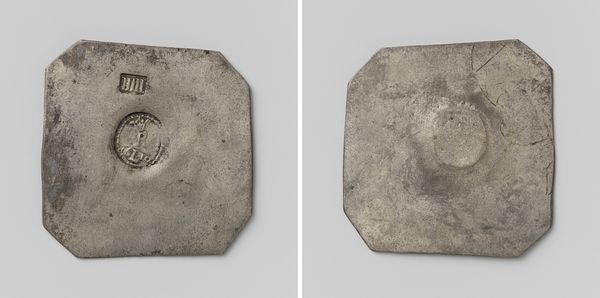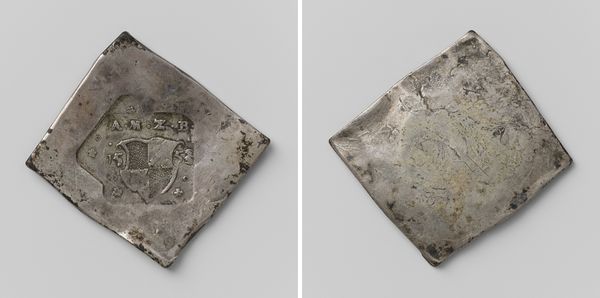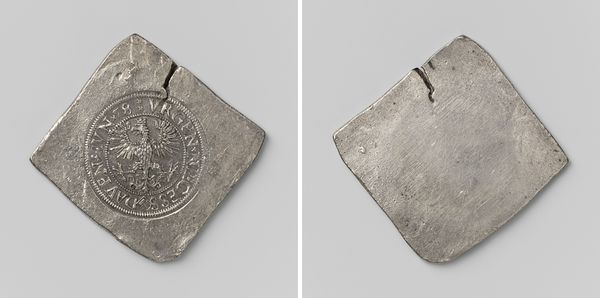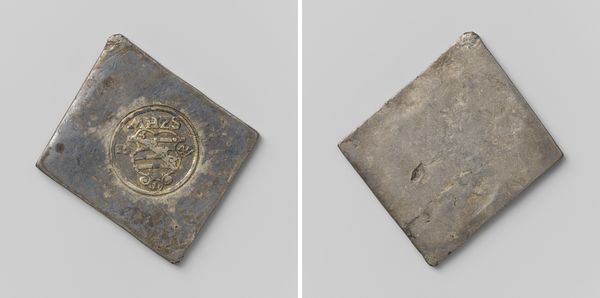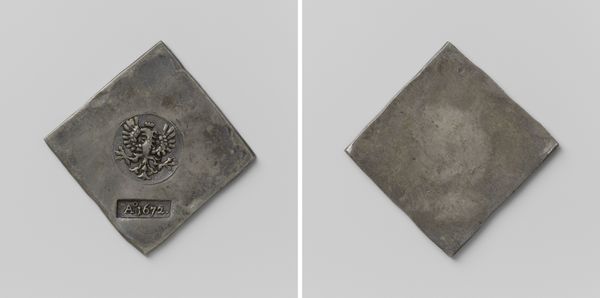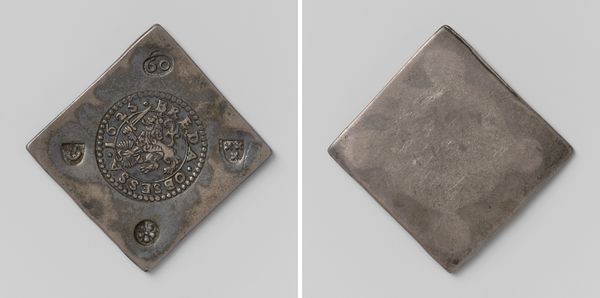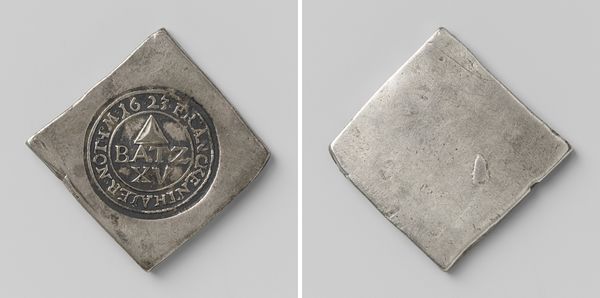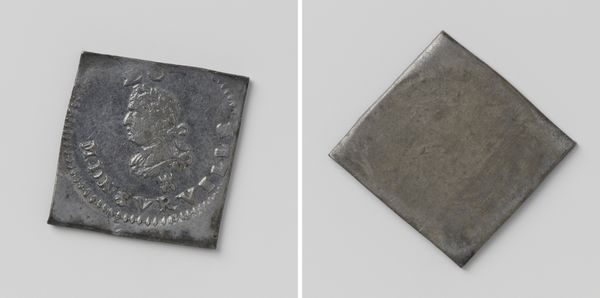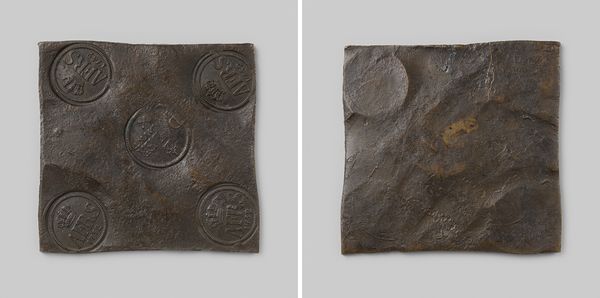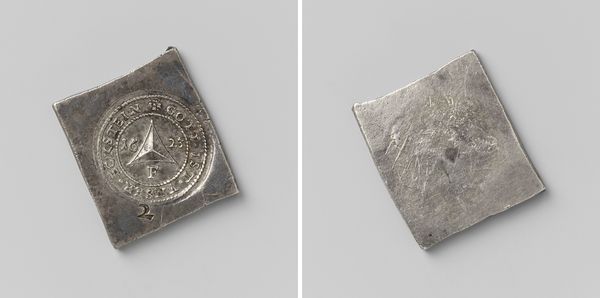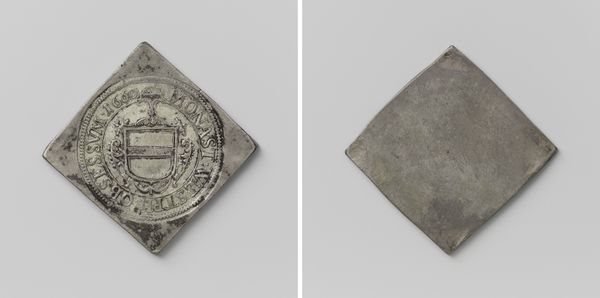
Twee eenheden, noodmunt uit Gulik, geslagen tijdens het beleg door Maurits, prins van Oranje-Nassau, vervaardigd door stukken te knippen uit serviesgoed en bestempeld met het monogram van commandant Johann von Rausschenberg Possibly 1610 - 1629
0:00
0:00
print, metal
#
dutch-golden-age
# print
#
metal
#
history-painting
#
monochrome
Dimensions: height 2.5 cm, width 2.4 cm, weight 9.30 gr
Copyright: Rijks Museum: Open Domain
Curator: Here we have an example of emergency coinage. This two-unit piece comes from Gulik, likely sometime between 1610 and 1629. It was crafted during a siege by Prince Maurits of Orange-Nassau. Made by cutting pieces from tableware and stamping them with the monogram of the commandant, Johann von Rausschenberg. Editor: My first thought is how stark it is, and really kind of brutalist in its design, yet so charged with its purpose. It feels like a silent scream from that time. Curator: It certainly evokes a sense of austerity and desperation, doesn't it? The rough-hewn shape, the utilitarian stamping... It tells a clear story. What do you make of the monogram? Editor: The monogram really highlights the tension inherent in crisis leadership. Von Rausschenberg's attempt to exert order, even in a decentralized way, feels so telling. Was it a sign of authority? Hope? Control during chaos? Curator: Precisely! Symbols always strive for significance. During a siege, regular currency would have become scarce, so this was a practical solution to maintain some economic function within the besieged city, but at what cost? Editor: Looking at it from a contemporary view, I also feel this almost punk aesthetic quality. A sort of resistance and resourcefulness. There’s power in how this piece of metal disrupts expectations. A direct material act, which now speaks across time about resilience, if you see it with an optimistic view. Curator: Or the hubris of attempting control, to look at the glass half-empty. Regardless, it also prompts interesting questions about the very nature of money. Its value, both symbolic and real, becomes incredibly tangible during times of crisis like these. It asks you to consider if something even is ‘real’ when it is literally torn from an object of mundane use. Editor: This little piece provides such an immediate link to a tumultuous moment in history, revealing layers of political power, social order, and the human spirit. I won’t forget the stories it evokes. Curator: A truly powerful object indeed. It has a lasting value beyond just a moment in time.
Comments
No comments
Be the first to comment and join the conversation on the ultimate creative platform.
